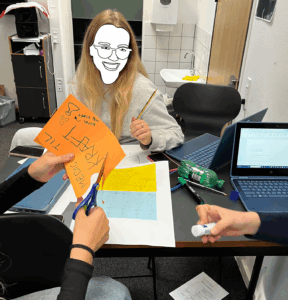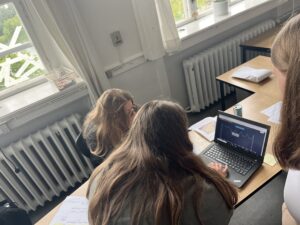Finding new ways and materials to create engaging, meaningful, and interesting learning experiences is always a challenge. In a data-driven world, the vast amount of available data is not just a powerful resource to enhance learning, it’s also a tool for developing important, 21st century skills.
Open Data, which is data that’s freely available without technical or legal restrictions, is increasingly being shared by governments, research institutions, NGOs, and individuals. Open datasets about air or water quality, transport, government spending, natural resources, and demographics are just a few examples available through national, regional, or institutional open data portals.
Imagine learning with real, timely, and tangible data. It’s a picture of the real world, one that can open minds.
Would you like to make use of this rich resource to design learning experiences?
You don’t need to be a data scientist to make sense of open data, just curious and open-minded

During my doctoral research in the use of Open Data in elementary schools, I have developed interventions in schools, systematically designing with teachers and young students authentic and game-based open data learning designs. I have seen increased the students’ motivation for learning, and their awareness on social issues, which aligns with their curiosity and desire to be heard. Witnessing the impact of Open Data in students has inspired me to share these good practices.
Whether you are a teacher, educator, or someone simply interested in creating engaging open data learning experiences, these tips can help you harness the power of Open Data.
6 Good Practices for Designing Open Data Learning Experiences

1. Start with real-world questions
-
- Students connect better with data when it answers questions they already care about.
-
- Which title do you think is more appling: “How safe are the streets near my school?” or “Let’s analyze traffic accident datasets”
- Always lead with questions that are relevant, local, and personal.
2. Use stories and real-world context
-
- Contextualize the data with stories or scenarios from real life. The closer to students’ own experiences, the better.
- Show: who collected the data, why it matters, and what it could change.
3. Keep tools interactive and hands-on
-
- Data can be abstract, especially for non-experts. Let students explore it in tangible, visual, and playful ways.
-
- Start with simple tools, even pen and paper. Then, move to visualizations, maps, or even physical representations.Younger students may find raw data or spreadsheets harder to understand.
- The more interactive and storytelling-friendly, the better.
-
- Consider students’ own interests and skills. Acknowledge beginners, but make sure more advanced learners can go deeper.
-
- Encourage peer learning and collaboration.
- Diversify your materials and tools. Allow different interests, strengths, and personalities.
5. Highlight data ethics and critical thinking
-
- Allow students to reflect about bias in data, veracity, privacy, and limitations.
-
- Encourage students to ask: “What might be missing? What biases might it contain? or Who benefits from this data being open?”
- You might be surprised, young students are often more digitally and ethically aware than we assume.
6. Celebrate small wins and share the results
-
- Show how even small data discoveries (like finding a trend or mapping something local) are valuable.
- Keep motivation high by making impact visible. Share students’ results with real audiences whenever possible to boost engagement and pride

Open data is a civic resource, and learning to use it should be fun, empowering, and inclusive.
Good luck applying these practices. Enjoy the process and don’t forget to share your experiences!
Author:
Alejandra Celis Vargas
cacv@ikp.aau.dk
Aalborg University Copenhagen, Denmark


